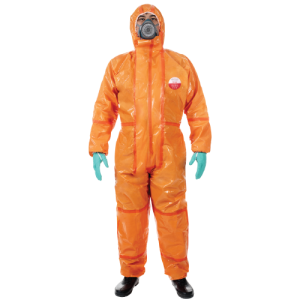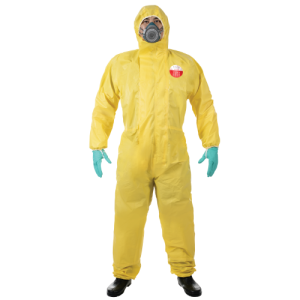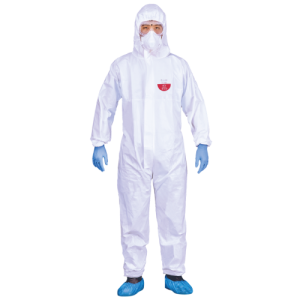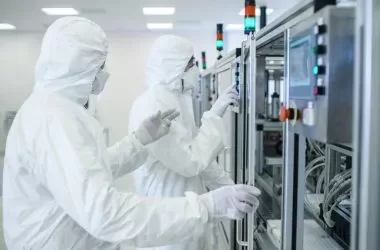Body Protection:
Coverall and Safety Suits in Malaysia
Industrial safety suits and coveralls are crucial in safeguarding workers from injuries and exposure to various hazards in the workplace. Among these protective measures, wholesale coverall suits play a pivotal role by offering comprehensive body protection against threats like chemicals, biohazards, airborne particles, electrical shock, flames, and more. These specialised industrial safety coveralls are designed to meet stringent standards such as EN ISO 13982, EN 13034, and EN 1073, ensuring their effectiveness in diverse work environments and industries. As a leading wholesale supplier of coverall suits and one of Malaysia’s best bulk coverall suit providers, our safety equipment supplier provides a framework that establishes benchmarks for protective clothing, ensuring it effectively shields individuals from potential workplace dangers.
| Type | Fabric | Weight | Seam | Search |
| Type |
| Fabric |
| Weight |
| Seam |
| Search |
Frequently Asked Questions Regarding Coverall and Safety Suits
What is a coverall or safety suit?
A coverall or safety suit is a single-piece utilitarian protective equipment designed to protect the wearer’s clothing and provide functionality in various work environments. Often used in industrial settings or by professionals like mechanics, coveralls come in various materials and configurations to suit specific needs.
What is the use of coverall?
Coveralls have two main uses: protection and function. They act as protective gear, shielding the wearer from hazardous substances like chemicals, dirt, heat stress or flames in industries like construction or manufacturing. Additionally, coveralls function as a uniform in some workplaces, offering pockets, zippers, and a professional look for mechanics, and painters.
What is the difference between coverall and overall?
The difference between coveralls and overalls can be subtle, and in some cases, the terms are used interchangeably, particularly in the British workwear industry. However, a key distinction lies in the number of pieces:
Coveralls: A one-piece garment that covers the entire body, including arms and legs. They typically zip up the front and prioritize full protection.
Overalls: Traditionally, there are two separate pieces: a bib with straps that connect to pants, They leave the arms exposed and are worn over regular clothes, offering less protection.
What types of chemical protective clothing are there?
According to EN ISO 16602, there are six types of chemical protective clothing:
Type 1 – Airtight Leakage Test: Suits in this category offer the highest level of protection and are gas-tight. They are designed to be utterly impervious to liquids and gases.
Type 2 – Inward Leakage Test: These suits provide a high level of protection but are not airtight. They are still effective against liquids and some gases.
Type 3 – Liquid Spray Test: Type 3 suits offer protection from liquid splashes and sprays.
Type 4 – Spray Test: This category provides less protection against liquid sprays than Type 3.
Type 5 – Particle Inward Leakage Test: Type 5 suits protect against airborne dust particles.
Type 6 – Low-Level Spray Test: These suits offer the least protection and are designed for minimal liquid splashes.
What are the standard fabrics used in coveralls?
Here’s a breakdown of standard coverall fabrics and their strengths:
Polypropylene (PP): Affordable, strong, and offers essential protection from dirt, dust, and debris. It’s commonly used in disposable coveralls for light-duty painting, construction, or general cleaning.
Spunbond Meltblown Spunbond (SMS): A non-woven fabric blend that builds upon PP’s strengths. SMS offers better breathability than pure PP, making it more comfortable for wearers in warmer environments.
Microporous Film: This breathable film protects against dust, particles, and light liquid splashes. It’s often used in medical coveralls or cleanroom environments.
What types of seams are used in coveralls?
There are three different types of seams usually used for coveralls:
- Stitched (or Serged): This is the most basic and common seam type. It uses threads to join two pieces of fabric together. While stitched seams offer good strength and can hold up well in dry environments, they create tiny holes that allow dust, light splashes, or some particles to penetrate the coverall.
- Bound: Bound seams offer an extra layer of protection compared to stitched seams. Here, the raw edges of the fabric are encased within a binding material, such as tape or another layer of fabric. This helps create a more liquid-resistant barrier. Bound seams are commonly used in coveralls where protection against light liquid splashes is needed.
- Taped: Taped seams are the most protective type. This method applies waterproof or liquid-resistant tape over a stitched seam, completely sealing the holes created by stitches. This creates a barrier that effectively guards against liquids, dust, and other contaminants. Taped seams are essential for coveralls used in environments with hazardous liquids or chemicals.
What do the colours of coveralls mean?
Coveralls come in various colours, each with its purpose or meaning. Here are some of the most common colours of coveralls workers wear:
Yellow, Orange and Lime Green: These bright and fluorescent colours are essential for keeping workers safe in environments with low light or moving vehicles. They ensure the wearer is seen clearly and prevent accidents. Some common high-visibility coverall colours include:
Blue: Blue coveralls are often worn by mechanics, plumbers, and electricians. Blue can project a sense of trustworthiness and is often associated with maintenance and repair work.
Green: Green coveralls can have a few meanings depending on the shade and context.
Dark green: Like blue, dark green can be seen in workwear for mechanics or tradespeople.
Olive green: Often used in military or tactical coveralls.
Light green: Sometimes seen in medical settings or for general safety applications, light green can have a calming effect.
White: White coveralls are typically used in cleanroom environments or sterile settings like food processing or laboratories. They project cleanliness and a professional appearance.
Red: Red coveralls are less common but can be used when there’s a fire risk or to denote someone in a supervisory role. Red is a universal colour of caution and danger.
How much do a coverall or safety suit weigh?
The weight of coveralls and safety suits in Malaysia typically ranges from around 55 grams to 1.5 kilograms, depending on various factors. Disposable coveralls made from lightweight materials like polypropylene (PP) fall on the lower end of the spectrum. In contrast, reusable coveralls from sturdier fabrics like cotton or flame-retardant tend to weigh more. Additionally, taped seams or thicker linings can add weight to a suit.
Gear Up for Safety: Shop Coveralls and Safety Suits Now!
Prioritize your well-being on the job with Excia‘s extensive selection of high-quality coveralls and safety suits. Whether navigating dusty construction sites, handling hazardous materials, or ensuring a sterile environment, we have the right gear to provide you with the highest level of protection. Don’t compromise on safety – browse our wide range of coveralls and safety suits today!






